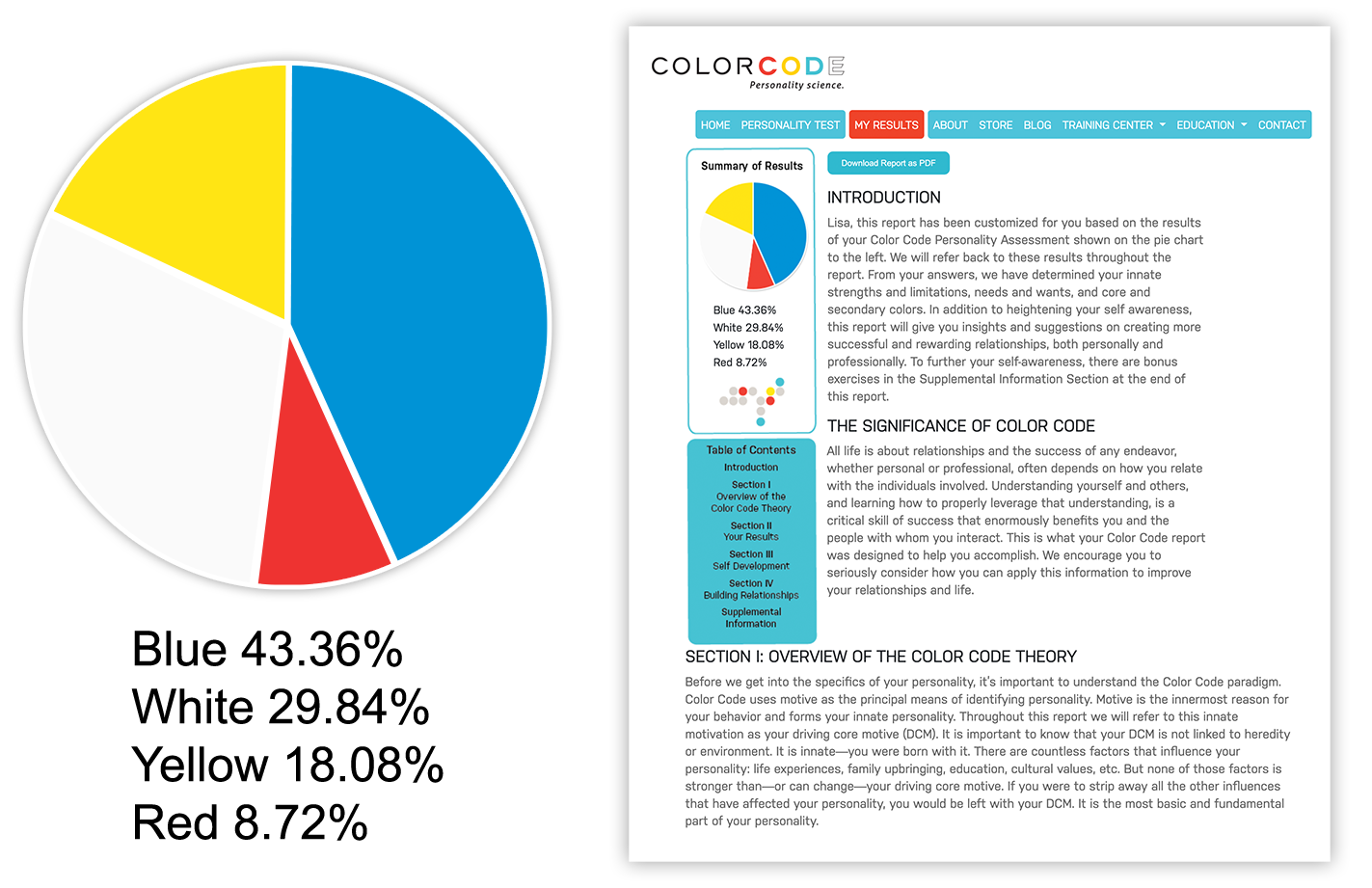Interrupter is a LIMITATION of the YELLOW personality in the Color Code Personality Assessment.
Interrupter
"When you interrupt, you’ve stopped listening. People need to be heard."― Jerry Seinfeld
Lisa Ulshafer /  Do you find yourself constantly interrupting others during conversations? Do you struggle to listen and wait for your turn to speak? Interrupting others can be seen as rude and disrespectful, and can also prevent you from fully understanding what others are saying.
Do you find yourself constantly interrupting others during conversations? Do you struggle to listen and wait for your turn to speak? Interrupting others can be seen as rude and disrespectful, and can also prevent you from fully understanding what others are saying.
Being an interrupter is a habit characterized by frequently interjecting or speaking over others during conversations or discussions, often without allowing them to finish their thoughts or express their opinions fully. Interrupting can disrupt the flow of communication, hinder effective listening, and negatively impact relationships.
Here are some common signs that you may be an interrupter:
- You may frequently interrupt conversations or talk over others, not allowing them to finish their thoughts or sentences.
- You may have difficulty listening to others, often losing interest or becoming distracted before they finish speaking.
- You may become impatient when others are speaking and feel the need to interrupt to get your point across.
- You may lack awareness of social cues or signals, such as body language or pauses in conversation, that indicate it is your turn to speak.
- You may dominate conversations, talking more than your fair share and not allowing others to contribute.
- You may not value or respect others' opinions, feeling the need to assert your own thoughts and ideas.
- You may be perceived as rude or inconsiderate by others due to your interrupting behavior.
- You may struggle to build positive relationships with others due to your tendency to interrupt and not listen effectively.
Here are 10 strategies to help you overcome being an interrupter:
-
Practice active listening: Focus on truly listening to others when they are speaking, without interrupting or formulating your response in your mind. Pay attention to their words, tone, and non-verbal cues, and show genuine interest in what they have to say.
-
Be mindful of your speaking habits: Observe your speaking patterns and be aware of any tendency to interrupt. Practice self-awareness and catch yourself when you feel the urge to interrupt. Take a pause and allow others to finish speaking before responding.
-
Practice patience: Develop patience and tolerance for different communication styles and perspectives. Recognize that everyone deserves to be heard and respected, even if you disagree with their views. Avoid the urge to jump in and interrupt when there is a disagreement or difference of opinion.
-
Ask for permission: If you feel the need to interject or share your thoughts, ask for permission first. Use polite phrases such as "May I interject?" or "Could I share my perspective?" to seek permission from the speaker before jumping in.
-
Use active listening cues: Use active listening cues, such as nodding, maintaining eye contact, and acknowledging the speaker's points, to show that you are actively engaged in the conversation. This can help you refrain from interrupting and instead demonstrate your respect for the speaker's thoughts and opinions.
-
Practice turn-taking: Respect the conversational flow and practice turn-taking. Wait for your turn to speak and avoid interrupting or talking over others. Allow others to finish their sentences or thoughts before you respond, even if you have strong opinions or ideas to share.
-
Develop empathy: Cultivate empathy by putting yourself in the speaker's shoes and considering their perspective without judgment. Understand that interrupting can be perceived as disrespectful or dismissive, and strive to show empathy towards others by giving them the space to express themselves fully.
-
Seek feedback: Ask for feedback from trusted friends, family, or colleagues about your communication style and tendencies towards interrupting. Listen to their feedback with an open mind and take constructive criticism as an opportunity for growth and improvement.
-
Practice self-control: Develop self-control and discipline to refrain from interrupting, even when you feel the urge to interject or share your thoughts. Take a deep breath, count to ten, or find other techniques that help you manage the impulse to interrupt.
-
Reflect and learn: Reflect on your communication habits and patterns of interrupting, and commit to learning from your experiences. Be willing to learn from your mistakes, be patient with yourself, and strive for continuous improvement in your communication skills.
Overcoming the habit of interrupting creates a culture of respect and effective communication in your live. You allow others to express themselves fully, without cutting them off or assuming what they are going to say. This enables you to truly understand their perspective, thoughts, and feelings, fostering deeper connections and relationships. By not interrupting, it gives you the opportunity to actively listen, to absorb information, and to respond thoughtfully, rather than reacting impulsively. It promotes patience, empathy, and mindfulness, and allows you to engage in meaningful and constructive conversations. By valuing and prioritizing the input of others, you can cultivate positive interactions, resolve conflicts peacefully, and build trust and rapport with those around you, leading to a more harmonious and fulfilling life.
Interrupter
― Jerry Seinfeld
 Do you find yourself constantly interrupting others during conversations? Do you struggle to listen and wait for your turn to speak? Interrupting others can be seen as rude and disrespectful, and can also prevent you from fully understanding what others are saying.
Do you find yourself constantly interrupting others during conversations? Do you struggle to listen and wait for your turn to speak? Interrupting others can be seen as rude and disrespectful, and can also prevent you from fully understanding what others are saying.
Being an interrupter is a habit characterized by frequently interjecting or speaking over others during conversations or discussions, often without allowing them to finish their thoughts or express their opinions fully. Interrupting can disrupt the flow of communication, hinder effective listening, and negatively impact relationships.
Here are some common signs that you may be an interrupter:
- You may frequently interrupt conversations or talk over others, not allowing them to finish their thoughts or sentences.
- You may have difficulty listening to others, often losing interest or becoming distracted before they finish speaking.
- You may become impatient when others are speaking and feel the need to interrupt to get your point across.
- You may lack awareness of social cues or signals, such as body language or pauses in conversation, that indicate it is your turn to speak.
- You may dominate conversations, talking more than your fair share and not allowing others to contribute.
- You may not value or respect others' opinions, feeling the need to assert your own thoughts and ideas.
- You may be perceived as rude or inconsiderate by others due to your interrupting behavior.
- You may struggle to build positive relationships with others due to your tendency to interrupt and not listen effectively.
Here are 10 strategies to help you overcome being an interrupter:
-
Practice active listening: Focus on truly listening to others when they are speaking, without interrupting or formulating your response in your mind. Pay attention to their words, tone, and non-verbal cues, and show genuine interest in what they have to say.
-
Be mindful of your speaking habits: Observe your speaking patterns and be aware of any tendency to interrupt. Practice self-awareness and catch yourself when you feel the urge to interrupt. Take a pause and allow others to finish speaking before responding.
-
Practice patience: Develop patience and tolerance for different communication styles and perspectives. Recognize that everyone deserves to be heard and respected, even if you disagree with their views. Avoid the urge to jump in and interrupt when there is a disagreement or difference of opinion.
-
Ask for permission: If you feel the need to interject or share your thoughts, ask for permission first. Use polite phrases such as "May I interject?" or "Could I share my perspective?" to seek permission from the speaker before jumping in.
-
Use active listening cues: Use active listening cues, such as nodding, maintaining eye contact, and acknowledging the speaker's points, to show that you are actively engaged in the conversation. This can help you refrain from interrupting and instead demonstrate your respect for the speaker's thoughts and opinions.
-
Practice turn-taking: Respect the conversational flow and practice turn-taking. Wait for your turn to speak and avoid interrupting or talking over others. Allow others to finish their sentences or thoughts before you respond, even if you have strong opinions or ideas to share.
-
Develop empathy: Cultivate empathy by putting yourself in the speaker's shoes and considering their perspective without judgment. Understand that interrupting can be perceived as disrespectful or dismissive, and strive to show empathy towards others by giving them the space to express themselves fully.
-
Seek feedback: Ask for feedback from trusted friends, family, or colleagues about your communication style and tendencies towards interrupting. Listen to their feedback with an open mind and take constructive criticism as an opportunity for growth and improvement.
-
Practice self-control: Develop self-control and discipline to refrain from interrupting, even when you feel the urge to interject or share your thoughts. Take a deep breath, count to ten, or find other techniques that help you manage the impulse to interrupt.
-
Reflect and learn: Reflect on your communication habits and patterns of interrupting, and commit to learning from your experiences. Be willing to learn from your mistakes, be patient with yourself, and strive for continuous improvement in your communication skills.
Overcoming the habit of interrupting creates a culture of respect and effective communication in your live. You allow others to express themselves fully, without cutting them off or assuming what they are going to say. This enables you to truly understand their perspective, thoughts, and feelings, fostering deeper connections and relationships. By not interrupting, it gives you the opportunity to actively listen, to absorb information, and to respond thoughtfully, rather than reacting impulsively. It promotes patience, empathy, and mindfulness, and allows you to engage in meaningful and constructive conversations. By valuing and prioritizing the input of others, you can cultivate positive interactions, resolve conflicts peacefully, and build trust and rapport with those around you, leading to a more harmonious and fulfilling life.
Change can be challenging and difficult to do all on your own.
Contact Lisa today to make the kind of changes in your life that lift you to your greatest potential.

2 Free Template Downloads
#1. Developing Strengths & Becoming Charactered
#2. Removing My Limitations
Fill out the form below to receive your free templates:
Click to explore the Strengths & Limitations of each color:
FULL Analysis
A completely customized report that is designed to fully analyze your personality and provide bonus tools to help you on your way to personal development.
Results Include:
- Pie chart showing you what you scored in all 4 colors.
- Comprehensive analysis containing 35+ page report with customized content that describes your individual personality style in depth.
- List of your innate strengths and limitations.
- A breakdown of secondary colors and how they affect your personality.
- Throughout are videos, activities and other tools embedded to help you more fully understand your results.



